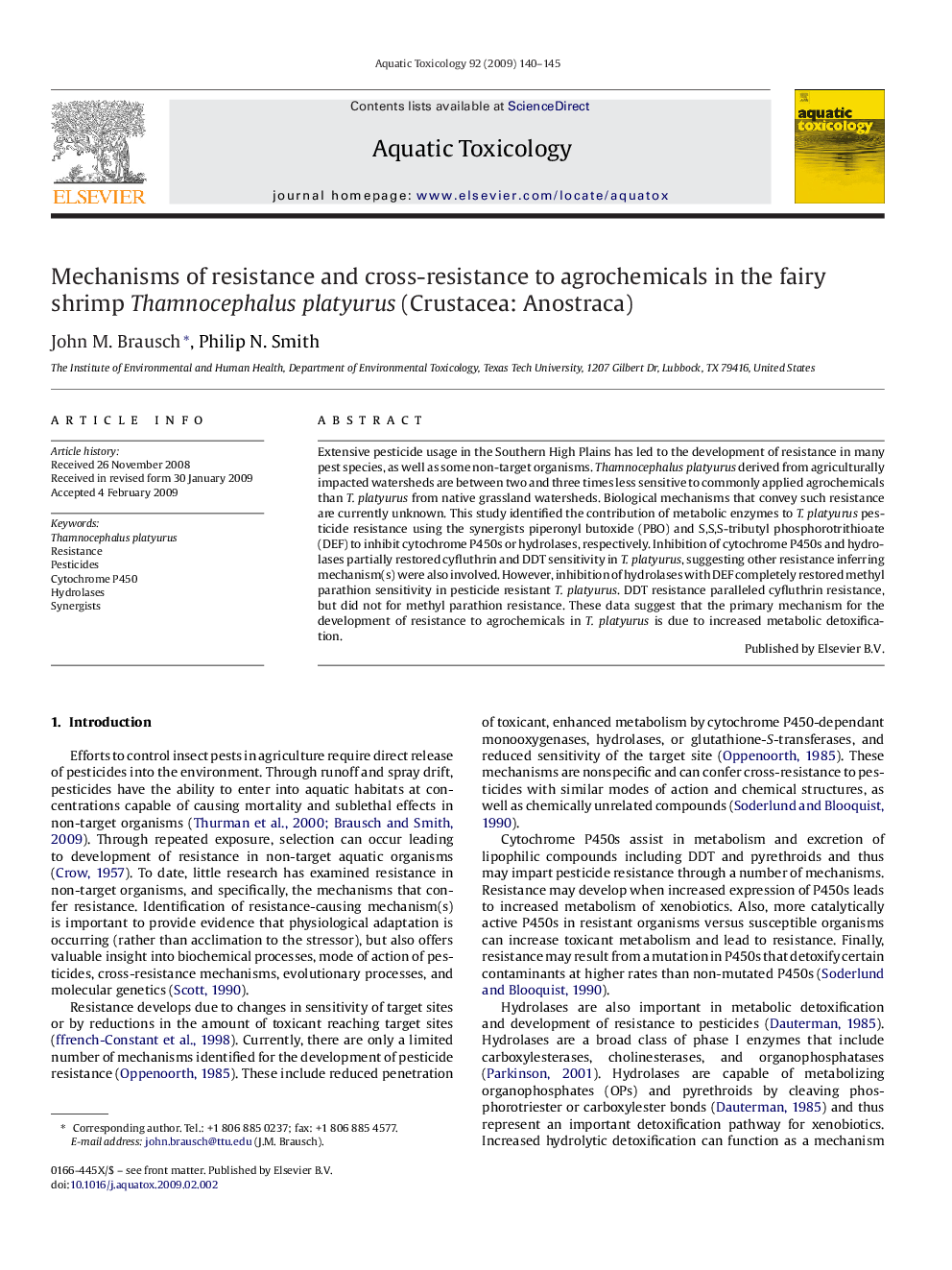| Article ID | Journal | Published Year | Pages | File Type |
|---|---|---|---|---|
| 4530372 | Aquatic Toxicology | 2009 | 6 Pages |
Extensive pesticide usage in the Southern High Plains has led to the development of resistance in many pest species, as well as some non-target organisms. Thamnocephalus platyurus derived from agriculturally impacted watersheds are between two and three times less sensitive to commonly applied agrochemicals than T. platyurus from native grassland watersheds. Biological mechanisms that convey such resistance are currently unknown. This study identified the contribution of metabolic enzymes to T. platyurus pesticide resistance using the synergists piperonyl butoxide (PBO) and S,S,S-tributyl phosphorotrithioate (DEF) to inhibit cytochrome P450s or hydrolases, respectively. Inhibition of cytochrome P450s and hydrolases partially restored cyfluthrin and DDT sensitivity in T. platyurus, suggesting other resistance inferring mechanism(s) were also involved. However, inhibition of hydrolases with DEF completely restored methyl parathion sensitivity in pesticide resistant T. platyurus. DDT resistance paralleled cyfluthrin resistance, but did not for methyl parathion resistance. These data suggest that the primary mechanism for the development of resistance to agrochemicals in T. platyurus is due to increased metabolic detoxification.
